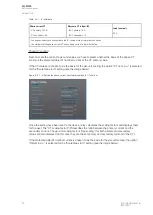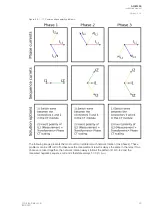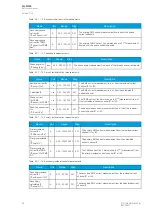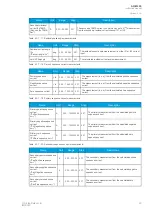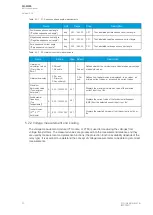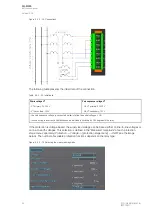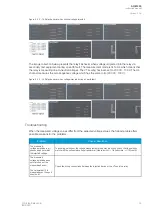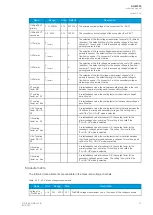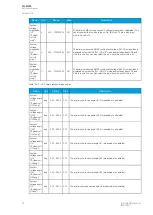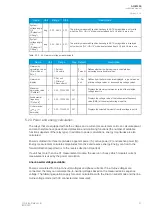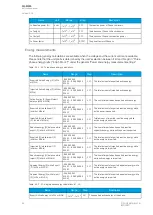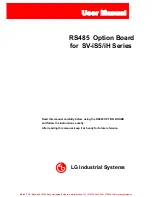
Voltage protection itself is based on the nominal voltage. A 20 000 V nominal voltage equals a 100 %
setting in voltage-based protection functions. A 120 % trip setting in the overvoltage stage equals to
24 000 V on the primary level (in this case a 20 % increase equals 4000 V).
Once the settings have been sent to the device, relay calculates the scaling factors and displays them
for the user. The "VT scaling factor P/S" describes the ratio between the primary voltage and the
secondary voltage. The per-unit scaling factors ("VT scaling factor p.u.") for both primary and
secondary values are also displayed.
The triggering of a voltage protection stage can be based on one, two, or three voltages (the "Pick-up
terms" setting at
Protection
→
Voltage
→
[protection stage menu]
→
Settings). Fault loops are either
line-to-line or line-to-neutral according to the "Measured magnitude" setting. As a default, the activation
of any one voltage trips the voltage protection stage.
Figure. 5.2.2 - 16. Selecting the operating mode.
There are several different ways to use all four voltage channels. The voltage measurement modes are
the following:
• 3LN+U4 (three line-to-neutral voltages and U4 can be used for either zero sequence voltage
or synchrochecking)
• 3LL+U4 (three line-to-line voltages and U4 can be used either for zero sequence voltage or
synchrochecking)
• 2LL+U3+U4 (two line-to-line voltages and the U3 and the U4 channels can be used for
synchrochecking, zero sequence voltage, or for both)
The 3LN+U0 is the most common voltage measurement mode. See below for example connections of
voltage line-to-line measurement (3LL on the left, 2LL on the right).
A
AQ
Q-M255
-M255
Instruction manual
Version: 2.06
© Arcteq Relays Ltd
IM00020
33
Summary of Contents for AQ-M255
Page 1: ...AQ M255 Motor protection IED Instruction manual...
Page 2: ......


